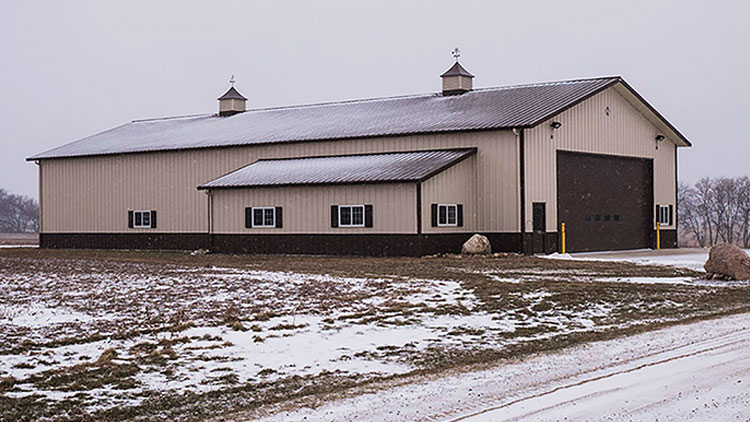
What do others see when they drive by your farm? Have you looked at your farm shop and toolsheds from their point of view? What things might need to be fixed, especially after a long winter season?
“It is worth taking time to inspect your farm shop and buildings, especially after winter,” says Dennis Lee, farm product line manager with Morton Buildings. “Start by evaluating what you see on the outside. Determine if there are things that need maintenance.”
Here is how Lee recommends assessing if your farm shop as a structure is ready for the busy times ahead:
Re-check drainage. Proper drainage for the site likely required considerable planning before you erected any buildings. “Evaluate drainage away from the building to see if it is still working as intended,” Lee says. If there is a drainage box — sometimes called a yard box, where water coming off the site collects — make sure it is still functioning optimally.”
Inspect gutters and downspouts. Winter can be tough on outside parts of a building, especially gutters and downspouts. “Ice or snow sliding off a roof as it begins to warm up can sometimes damage gutters,” Lee says. “Take a good look at gutters and downspouts all around the building. Make sure they are still serving their purpose and getting water away from the building.”
Check roof fasteners. It’s not every day you want to crawl around on a roof, but Lee says it’s worth an occasional inspection. After winter is a good time to do this. “Especially with some older nails, sometimes you may find them trying to back themselves out over time,” Lee notes. “That can result in a leak. It’s important to catch these things before a bigger problem develops.”
Examine windows and doors. Windows that aren’t sealed well or doors that don’t fit tight leak air and can also allow water in places where it should not be. “Check to make sure overhead doors are opening and closing correctly,” Lee says. “Test the electric sensor eyes, which are a safety measure, to make sure an overhead door won’t close on a person or other object if it is in the way. If the eyes sense an object blocking the path of the door, they are supposed to stop the door from closing. Make sure that they do so.”
Check walk-through doors. Sometimes small walk-through entry doors can stick or not shut properly. “Make sure they are opening and closing as they should,” Lee says. “If a small door doesn’t shut completely each time, it could be subject to being blown open and damaged during a wind event.”
Repair trim. Take a slow, deliberate walk around your building, making sure all trim is in place. If a piece has blown off or been damaged since the last time you checked, now is the time to repair or replace it, Lee says.
Read more about:
BuildingsAbout the Author(s)
You May Also Like




